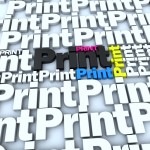 Envelope printing is much like any other kind of printing, except it requires specialised printing presses to achieve quality results. In this article we will explain the various methods and processes
Envelope printing is much like any other kind of printing, except it requires specialised printing presses to achieve quality results. In this article we will explain the various methods and processes
How to Print an Envelope
Envelope Printing falls into 2 main categories; over printing and bespoke flat sheet conversion. These categories are then broken down further by 3 methods of printing: Litho, Flexo or Digital. We explain these terms further down the page. The method used for your project will depend on many factors, for example, the size of envelope, intended use of the envelope, the quantity you need, the number of printed colours- 1 colour to 4 colour, etc. You don’t have to worry about all this, we will use our experience; taking all these factors into consideration before assessing the right method for printing your project. We will ensure you get the quality you are looking for as well as the most cost effective way of printing your project.
Envelope Overprinting
Envelope overprinting is where we print directly onto pre assembled envelope stock. There are hundreds of stock options to choose from, offering great flexibility, see our envelope guide for more information. We can overprint stock using the three printing process, Litho, Flexo or digital, these are described in the next paragraph. Overprinting is very flexible, printing from 1 colour to 4 colours in one pass through our presses. The overprinting option is perfect for volumes of 500 to 100,000 or more.
Bespoke Envelopes
Printing of bespoke envelopes offers the greatest flexibility in terms of type of material,size of envelope and printed image area. We can produce an envelope from virtually any type of paper or light board. Like overprinting, one or more colours can be printed at one time. The printed area can also cover 100% of the envelope surface, enabling the print to go right up to the edges of the envelope on both the front and back. Bespoke envelopes are printed using the high quality Litho method. The difference between bespoke production and overprinting; is we print the image onto a flat sheet of paper and then assemble the envelope once the printing process is complete. This is called “Flat Sheet Conversion”
Envelope Printing Methods
There are three ways to print envelopes, Litho, Flexo or Digital.
Lithographic printing or “litho” for short is widely used in all areas of printing not only in envelope printing . “Litho” produces very high quality results form 1 to 4 colour printing. ” Litho printing is used for the “overprinting” and “flat sheet conversion” methods of printing.
Flexographic printing or flexo for short uses and ink jet application. We use this method for large quantities of 50k or more. This is a very fast and economical way of printing envelopes in one or two colours.
Digital Printing, this method is used if only a small quantity of envelopes is required. Around 500 envelopes is the economical brake point. The beauty of digital printing is you can print as few as you like. The quality of the image is very good while still controlling the budget. You can also personalise each envelope with a piece of variable data, such as a clients name and address.
For envelope printing advise and guidance please contact our friendly and experienced team, we are here to help in any way we can. T: 02392 50 20 52 E: sales. Q: Quotation Request Form.
